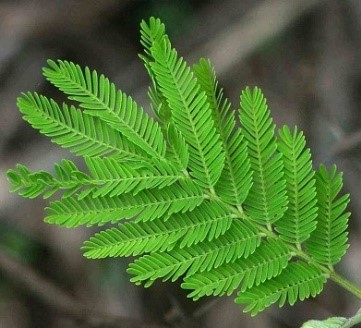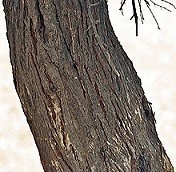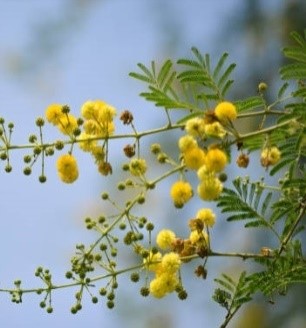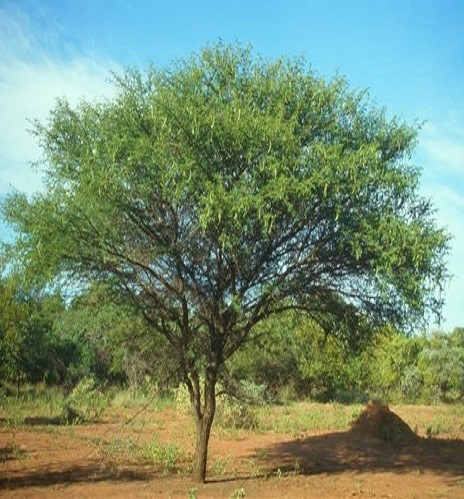Trees
Acacia nilotica Linn
Acacia nilotica Linn
Description :
An evergreen, thorny,
moderate-size tree, 20 m tall. Diameters up to 1 m have been recorded. Leaves
are compound, 2.5 to 7.5 cm long. The crown form varies from conical to
spreading. The flowers are fragrant, yellow to bright yellow growing in bunches
and mature year around depending on sub-species and geographic location. The
pods are variable 4 to 22 cm long, and also mature year around depending on
sub-species and geographic location. It is easily reproduced from seed.
Pre-treatment of seed with boiling water increases germination. It is
relatively fast growing and will yield 4 to 15 m3/ha/yr in 20 years.
Average height and diameter for 20 years old tree is 10 m and 15.7 cm
respectively. It is relatively fast growing and will yield 4 to 15 m3/ha/yr
in 20 years. Average height and diameter for 20 years old tree is 10 m and 15.7
cm respectively. Sapwood is Close grained, white, heartwood is pinkish white
turning to reddish brown. Having specific gravity of 0.75 and a calorific value
of 4900 kcal/kg.
Distribution :
This tree is native to Pakistan and is found in the Sindh, Punjab,
Balochistan and KP. It is wild as well as extensively cultivated throughout
the world, usually below 600 m in elevation. An intolerant, drought resistant
tree that grows on a variety of sites. It will tolerate saline, sodic sites if
adequate soil moisture is available. It requires precipitation of 125 to 1300
mm/yr. It prefers a semi-arid, sub-tropical/tropical climate within a temperature
range of 1 to 45°C. It exhibits distinct differences between sub-species as to
frost hardiness and drought resistance.
Uses :
This valuable tree is
adapted to a variety of arid sites. Wood is durable, heavy, hard and very
strong. It is aggressive and is easily established. It is important in the
central and southern regions of Pakistan and its wood is valued for fuel and
charcoal. Young trees need protection from grazing. It has great potential as a
farm forestry tree. It is useful for controlling erosion in gullied areas and
also can be grown on saline, sodic sites for soil reclamation and biomass
production. Can be also used as fodder, fuel and charcoal, agricultural
implements, pit props, apiculture, gum, lac production, tannin, fencing, land
stabilization, nitrogen fixing, and medicinal (bark for diarrhoea and
dysentery).



